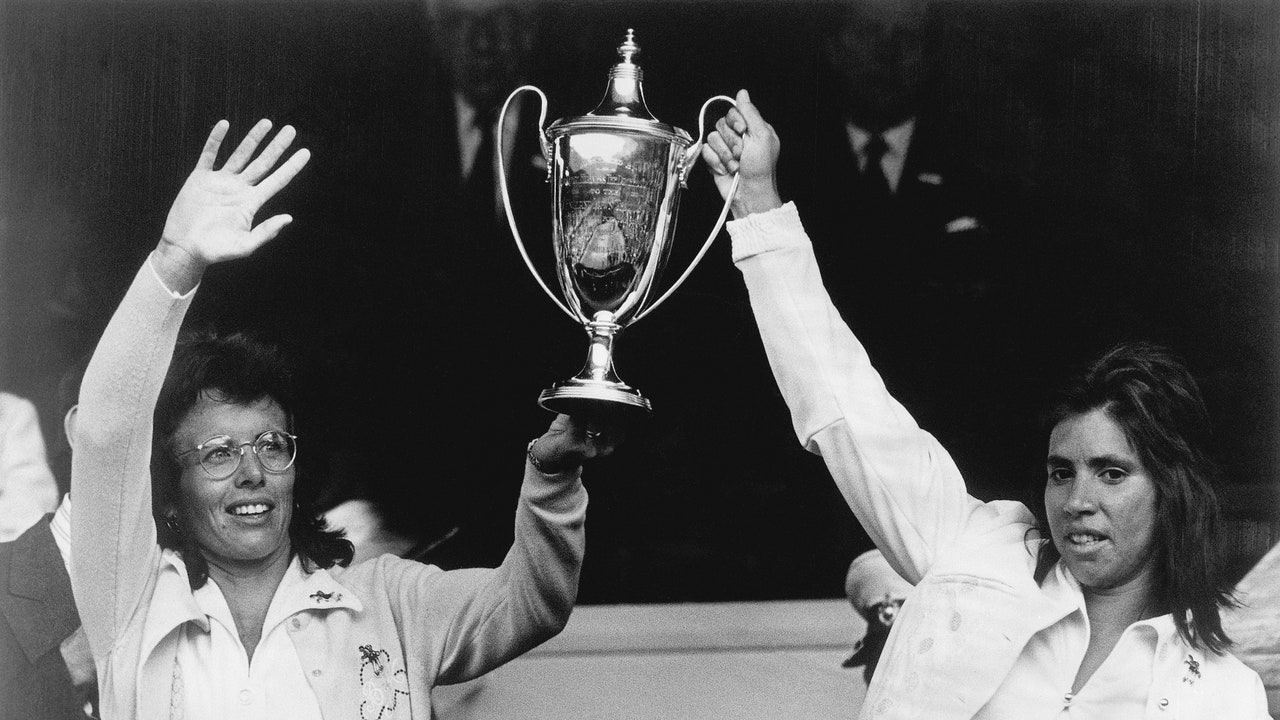But why tennis—why not, I don’t know…play baseball like your brother or something?
Tennis was my last sport—I grew up in team sports. There were very few sports in general available for women, but Susan Williams in fifth grade asked me if I wanted to play tennis. I said, “What’s tennis?” She said, “You get to run, jump, and hit.” And I said, “Oh, my God—those are my three favorite things in sports. Yeah, I’ll try it.” And so we went to this country club, and I hit the first one over the fence.
And the rest is history.
Yeah, pretty much! By the time I was 13, I decided I was going to be the number one tennis player in the world, and I knew I wanted to change tennis. I read all the history, all the biographies—99% of them were about men, but I didn’t think about that yet. I didn’t know the word “platform” yet either, but I knew what it meant. Fast-forward to 1968, and we finally had what so many of us had dreamed about: professional tennis, or “open” tennis—open to everyone if you were good enough [as opposed to amateur tennis, with sketchy prize money and under-the-table “appearance payments,” among a host of other player complaints]. My then husband told me that if we could get pro tennis to happen, that the men would try to get rid of me. And I said, “No—they’re my friends; they’re great.” And he was correct, and I was totally wrong.
So the Original Nine founding their own tour was less about an entrepreneurial spirit and more about simple self-preservation?
Let’s put it this way: Rod Laver wins Wimbledon and is paid 2,000 British pounds. I won and was paid $750. I was not happy. And pretty soon, tournaments were dropping women’s events—and if they did have them, the prize money was an eight-to-one ratio. Things were going south really fast. And Gladys Heldman, the publisher of World Tennis magazine, started helping Rosie Casals and Nancy Richey and I, and eventually a few more of us. We ended up signing with her for $1 before a tournament at the Houston Racquet Club, which was the formation of the Original Nine [in addition to King, Casals, and Richey: Judy Dalton, Julie Heldman, Kerry Melville, Peaches Bartkowicz, Kristy Pigeon, and Valerie Ziegenfuss] and the birth of professional women’s tennis. Our 50th anniversary is this year. Today, nine out of 10 of the top earners in women’s sports are tennis players. The reason Serena makes all that money, the reason we have a WTA Tour or a WTA at all—everything goes back to that moment. We were willing to give up our careers—we crossed that line in the sand where we knew that we may never have played again. And we didn’t care—we decided that we were going to go for it. And every time today that a woman gets a check, we feel proud.
